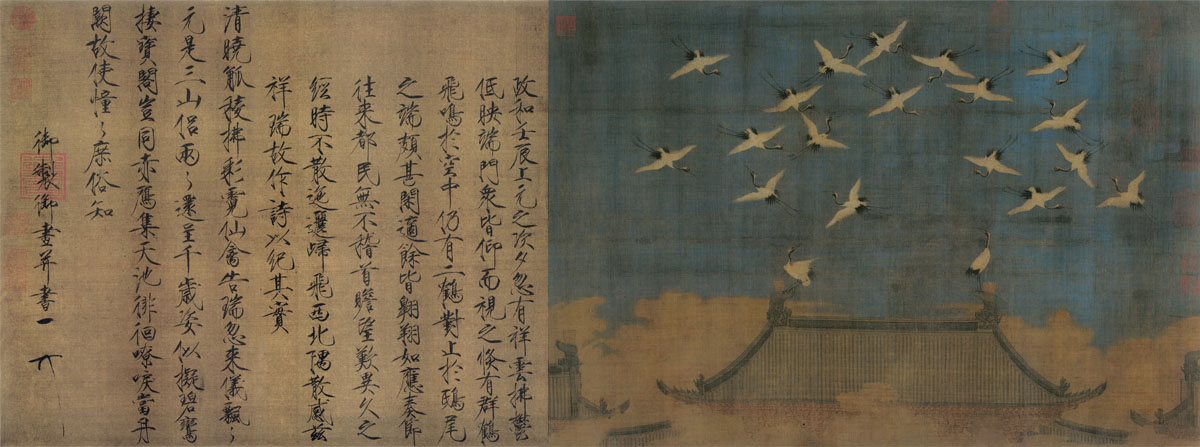Ghost artists offer helping hand to painting, calligraphy masters

Auspicious Cranes, though attributed to Emperor Huizong (Chinese, 1082–1135, ruled 1100–25) in the Song Dynasty (960-1279), is believed to involve the assistance of ghost artists.
As a collector of paintings and calligraphy works, I constantly encounter artistic works involving artists asking other people to paint or write on their behalf. This phenomenon was common in the past and remains so today, albeit for reasons of profit.
There are three reasons for this phenomenon. First, painters and calligraphers are invited to paint or write about themes they are unfamiliar or unskilled with. Second, they lack time. Some famous painters and calligraphers had official or social duties with little time for creating for others. Third, some painters or calligraphers are so well-known that many clients enlist their services.
There are similarly three types of assistance offered in painting and calligraphy. First, the artwork is created by a ghost artist despite the acclaimed painter or calligrapher having their seal on the work. Second, the acclaimed painter or calligrapher has their signature and other personal information on the work. Third, the acclaimed painter or calligrapher asks other people to create the main body of the artwork before adding the finishing touches themselves.
In general, artists regard works by a ghost artist as their authentic works. There are occasions when collectors try to verify the authenticity of a painting or calligraphy work by assessing the style or determining that only the seal is authentic.
According to historical materials, many ancient painters and calligraphers had ghost artists. For example, Wu Daozi had Zhai Yan and Zhang Zang; Wen Zhengming had Qian Gu, Zhu Lang and Wen Peng; Zhang Daqian had He Haixia; and Qi Baishi had Qi Ziru and Lou Shibai.
This phenomenon has long existed in history and such artworks exhibit both artists’ traces and styles. It is hard to adopt a certain attitude toward these works. On the one hand, they can’t be treated as authentic works. On the other hand, they can’t be simply categorized as counterfeits.
